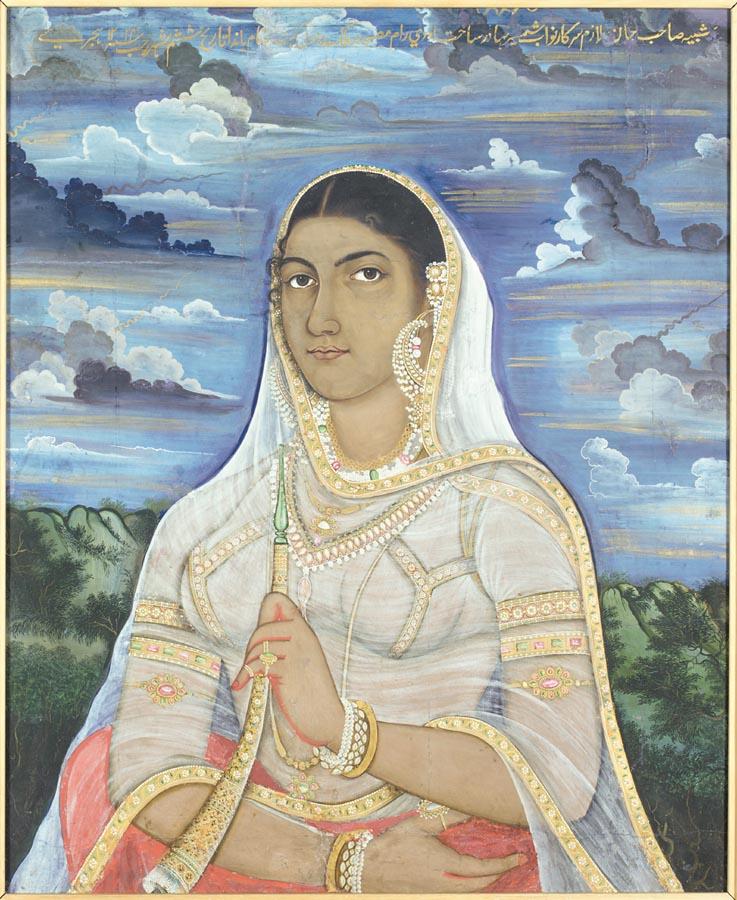FWP:
SETS == TRANSLATABLES
DESERT: {3,1}
EYES {3,1}
GAZE: {10,12}
ROAD: {10,12}
This particular word for path, jādah , is part of Ghalib's repertoire of highly abstract images; it's never used matter-of-factly, when a road is just a road. For more examples of its effectiveness, see {9,4}. Like the other verses that use the word jādah , this verse too is haunting, suggestive, elliptical. (For another case in point, see the next verse, {92,3}.)
In a way, the verse is easy to understand. It can be turned into prose, it can even be translated. We can easily put together the grammar; since it has enjambment, the two lines are even part of the same thought, which is a further help in constructing its meaning. My two readings of the second line differ only subtly, though that subtlety is potentially (mystically) meaningful-- in (2a) there is a path, even if it is a paradoxical one; in (2b) there may well be no path at all.
For that second line, the commentators offer us three basic possibilities:
(1) The gaze of the eye in a picture is fixed forever in one direction; by extension, therefore, it's petrified with 'amazement' (Nazm). On the basic concept of ḥairat see {51,9x}.
(2) The gaze of the eye in a picture doesn't exist, because there's no eye there to gaze; thus it's an image of nonexistence (Hasrat, Naim, and my reading (2b)).
(3) The gaze of the eye in a picture is a path for the lover who is 'lost' in contemplation of the beloved's portrait. His ardor provides him with this path through the desert and may guide him toward the mysteries of self-transcendence that he seeks (Faruqi, and my reading (2a)). This reading also reminds us of the classic romance and fairy-tale motif of the hero who falls desperately in love when he merely sees a picture of some distant fair one.
Everybody is concerned to resolve the obviously obscure second line, and nobody has much to say about the first line. But there are a couple of points of interest in it too. The first is the vuh , 'that' desert. It's not just any old random desert, but a very particular one. (For a reminder of just how elaborately perverse the deserts of passion can be, see {16,4}.)
Perverse, and even hellish. For the speaker's ardor doesn't just lead him into such a desert, or cause him to wander casually through it. His ardor literally 'runs him around' [dauṛāʾe hai] in it. The suggestion is that whatever might be made of the second line, the lover's position is not a happy or easy one. He finds no rest, no tranquility, no assurance. Is he perhaps even getting-- from his own ardor, of course-- a kind of 'runaround'? Running around in this haphazard way is, after all, just what a person might do if he was stuck in a desert and couldn't find any 'path'.
Compare the equally strange desert imagined in {430x,5}. And for another verse about the power and mystery of the gaze, see {10,12}.
The Urdu inscription at the top of this painting says: 'The portrait of Sahib Jan the inseparable mistress of the Nawwab Shamsher Bahadur; by Uday Ram, the painter in the kingdom of Bundelkand, the site of Banda, on 6 Rajab 1224 of the Hijra [17 August 1809]':

Nazm:
That is, the ardor for mystical knowledge takes me away toward that desert where there's no path except for the gaze of the eye of a picture. Having set foot in this valley, every person is compelled to become amazement [ḥairat] from head to foot. (91)
== Nazm page 91